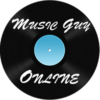Thanks to digital recording, the standard 24bit format allows for a lot of dynamic range between clipping and the noise floor, 144dB to be exact (1 bit = 6dB signal to noise ratio; 24*6dB=144dB).
This means that rather than worrying about the noise floor at all, you can just focus entirely on staying a healthy distance away from clipping, knowing that the only detrimental noise you can generally anticipate in a digital recording environment is that of unwanted distortion from recording too hot.
If you’re hearing anything in the background when you’re setting your levels, 99% of the time it’s from ambient room noises such as a running air conditioner or other appliance.
These are sounds which are going to be picked up regardless of your recording setup, digital or analog, but many people confuse these sounds with the noise floor because it’s difficult to hear them until you have the sound proofed headphones on and a sensitive mic listening for them.
Getting back to the original question of where to set recording levels, the answer is clear cut with the only variable being are you recording analog or digital.
Where to Set Recording Levels
Digital recording levels again give you the luxury of a much lower noise floor. So generally the rule of thumb is to just make sure you’re not close to clipping in the signal at the loudest moments, then roll back 10dB or so.
So if you’re going to track an electric guitar part, play the hell out of that guitar, strumming as violently as you can and set the level to where it’s at least 10dB away from clipping. Mind you that’s at the LOUDEST points in your recording, meaning on average it’s going to be even quieter than -10dB.
You can always safely add volume later, but you can’t fix a clipping signal on the in, so playing conservative is the hard and fast rule here.
Where to Set Analog Recording Levels
With analog you don’t have the luxury of that same 144dB of dynamic range between clipping and the noise floor. Instead it’s encouraged to set the levels as close to as hot as possible without clipping so that you can efficiently use as much of that difference in the inherent analog dynamic range as possible, reducing the noise floor hiss on the tracks as much as possible and focusing on the recorded signal, instead.
In fact this is where the mistaken notion of setting levels as close to clipping in the digital realm came from. A few of the early adopters of digital recording read books and heard stories of their producer idols and understood that they were setting the levels hotter in analog environments and they decided to apply that same rule to digital recording without thinking.
Either that or they just wanted louder, more exciting recordings, and were mistaken in thinking that clipping was the way to achieve that.

